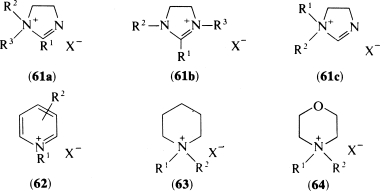ANTI-STATIC ADDITIVES
BACKGROUND:
The anti-static additives are mixed with the polymers for providing static protection by reducing the resistivity of different materials. The utility of various anti-static additives is based upon the level of static protection requirement and also determines the durability of the anti-static effect.
Majorly they are added to plastics materials which are used for electrical insulators and thus they are used for supporting high static build-up. They are made up of alkylsulfonates, fatty acid esters as well as ethoxylated amines along with quaternary ammonium compounds and alkylphosphates.
POTENTIAL LIMITATIONS OF USING ANTI-STATIC ADDITIVES:
- There is an increasing problem of handling with caution along with contamination issues that can occur during transportation, storage as well as packing.
- In addition to this, dust attraction affects the appearance as well as the performance of the products into which it is added.
- Also, there is an increased risk of electrostatic discharge which potentially damages electronic components
- The risk of electrical discharge can cause shocks to employees as well as fires along with an explosion in the workplace.
WORKING OF ANTI-STATIC ADDITIVES:
The antistatic additives are added to products for eliminating a static build-up. In addition to this, the functionality is even spread out to effective prevention of dust attraction to surfaces as well as electrostatic discharge (Nasirov et al., 2018).
Majorly these are added to plastics in the process of compounding, injection moulding as well as extrusion. Also, the long term antistatic additives are non-migrating in nature. They do not show any movement or migration within or out of the polymer in which it is added. The working of such additives is based on utilizing a co-continuous ion-conductive polymer phase.
Mostly the antistatic additives are is a kind of amphiphilic in their molecular form belonging to the organic polymer surfactant. These additives form a continuous phase of the conductive monomolecular layer. It results in reducing the resistivity as well as the escaping of static electricity.
TYPES OF ANTI-STATIC ADDITIVES:
The antistatic additives are of 3 types which include ionic, amphoteric as well as nonionic additives. Also, the ionic anti-static additives are further classified into anionic and cationic.
- These ionic additives easily form water molecule film by absorption of water molecules from the surrounding environment which is required by the ionic surfactant. Also, the ionic antistatic additives have a much higher adsorption capacity and also work for longer periods (Yang et al., 2010).
- The ionic additives have a better antistatic effect as compared to other antistatic additives. Also, the arrangement of antistatic additives helps in providing an ionized occasion for tracing the electrolyte present in the timber as well as fabrics.
- Different types of antistatic agents are higher alcohol sulfuric acid ester salt anionic as well as polyethylene glycol fatty acid ester nonionic, betaine amphoteric surfactant and quaternary ammonium salt type cationic surfactant.
- The anionic antistatic additive and the negative charge in the water help in bond formation with the negative charge of the fibre (Zhan-qin et al., 2004).
- The Nonionic antistatic agents majorly consist of esters like glycerol esters of fatty acids as well as ethoxylated tertiary amines. The commonly used nonionic antistatic additives are polyolefins.
- Also, the glyceryl monostearate have high utility in different polypropylene injection moulding applications. The antistatic additives are measured as per loading levels which in turn are dependent on the processing temperatures of the resin as well as the presence of other additives.
BENEFITS OF USING ANTISTATIC ADDITIVES:
- They provide an immediate effect in which they are added.
- Most of them have a permanent effect on the products to which they are added.
- They are independent of humidity levels making them ideal for usage in high moisture environments (Antistatic Agent – an overview | ScienceDirect Topics, n.d.).
- They show uniform as well as a homogenous distribution without any hotspots in the products in which they are added.
- They do not alter the intrinsic properties of the polymer and thus make the least change in the characteristics of the host polymer.
- The anti-static polymers show good compatibility with the polymer in which they are added.
- They demonstrate excellent processability as well as high-end surface quality
- Mostly they are added in low quantities thus they have low addition levels
- Also, they do not show any adverse effect on either clarity or the mechanical properties of the polymer
- They are highly cost-effective.
FAQS:
Q1: What are anti-static additives?
Ans: These are chemical additives that are designed for reducing the vulnerability of materials to the problems of static and friction by reducing their resistivity.
Q2: How do antistatic additives work?
Ans: The antistatic additives are made of polar molecules and have non-uniformly distributed charge with negative as well as positive ends. The molecules of the antistatic additives migrate to the polymer surface with their negative ends pointing out. It utilized water molecules in the atmosphere and act as polar molecules. The positive ends bond with the negative ends of the additive. This bond formation results in the formation of a thin film that has electrical conductivity and thus resulting in the formation of an anti-static coating.
Q3: What are the uses of anti-static additives?
Ans: The antistatic additives are used while manufacturing pipelines as well as hoses. It is used in washing detergents for decreasing crackling in synthetic fibres as well as used in clothes that are made from materials like polyester. These are used in plastic packaging for food that is non-toxic and safe to use with consumable food products.

